The following article was originally produced for Buddhistdoor en Español. This is a translation of that interview.
Nobody has visited Cuba until they have visited Matanzas. Almost all tourists yearn for the virginal sands and waters of Varadero or—perhaps fewer tourists—the archaic nature of the Ciénaga de Zapata with its resilient endemic species.
But there’s much more to see. Such as Cárdenas—seat of the most ancestral aborigines, of the first patriotic flag, and the oldest Latin American statue of Columbus. There is also the provincial capital city itself. There, the sea is just another citizen whose serene walk is barely “civilized” by the inevitable metallic bridges. And an unforgettable spectacle to see is the sunrise in the Cárdenas bay when a sudden fiery explosion emits a stairway of golden waves on the horizon, expanding to the infinite while being welcomed by the flickering lights of the awakening homes.
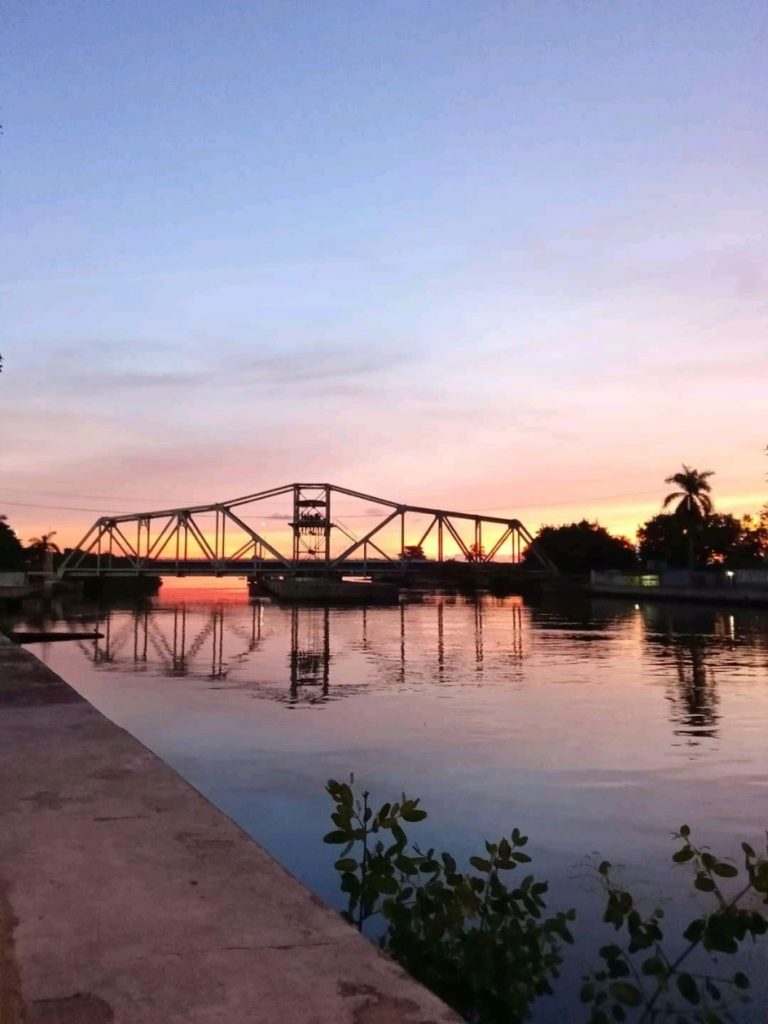
However, perhaps one day Matanzas will be a place of spiritual pilgrimage. That may happen if the project of the Zen Center of Cuba—conceived by the sanghas of Bárbara Kosen (Spain) and Michel Tai Hei (Cuba)—comes to fruition.
Both are well-known Buddhist leaders. The former has been an heir of the Soto Zen lineage since 1993 and founded the Asociación Zen Taisen Deshimaru in Spain. The second started his practice in 1999 and received Dharma transmission (shiho) in 2018.

The center—still in its embryonic form—tries to make up for the total absence of Zen centers in Cuba. At La Habana, meditators must gather in a private home. Meanwhile the dojo at Matanzas is travelling, offering zazen in parks, natural surroundings, or in spaces lent by the Metropolitan Community Church (MCC) and the Pharmaceutical Museum.
Therefore, “impressed by the dignity and determination of the Cuban practitioners,” Sensei Bárbara wrote a public letter hoping to raise the sum of USD$31,500 for the purpose of, “creating a place for daily practice which could also welcome the residents of the island and welcome the masters visiting Cuba.” Organizers hope that the future center would have a capacity for thirty people. “Besides being the dojo of the city of Matanzas,” reads the project, “it would have a library, a conference room and another one dedicated to sewing and calligraphy.” (Zenkan)
As we were interested in knowing more about this promising initiative, we requested Master Tai Hei’s guidance. He directed us to the nun Darlenys Shin Gyo from the dojo at Matanzas, who answered our questions.
Buddhistdoor Global: When and how did the idea of a Zen Center in Cuba arise?
DARLENYS SHIN GYO: It is a longing of all those who ever practiced here. For a while, it was a distant dream. Then, eventually the wheels started to turn and the project started to take form. What we have now is the fruit of years of effort and of the great compassion of our masters, who have worked hard to continue the practice of Zen in Cuba. We give thanks for that and we also count on the guidance of Master Michel Tai Hei, who has been part of the Sangha of Cuba for more than twenty years, spending much of that time as the teacher (godo) at the dojo of La Habana.
And, of course, the ordination of one of us as a master was that last little push that made us start to search for a place where the master Tai Hei could also count on a place to share his Buddhist teachings with Buddhists and others who are interested, either from the island or from anywhere in the world.
BDG: What were the primary factors influencing the choice of the city as the place for the project?
DSG: I would like to say that it is an act of profound poetry, the natural consequence of the seeds sown in our city, and which precede us in time. But it is also a consequence or an effect of the practice over many years in this area. Before the dojo of Matanzas existed, practitioners from all over Cuba came to the retreats that were organized and celebrated here. In some ways, they are also responsible for the Zen flourishing in our hearts.
To this we must add the fact that we are very near the capital, but with the advantages of not being such a central or populated city. There is also the influence of the cost of real estate, the possibilities of interchange offered by the city’s religious communities, and even that inclusive and conciliatory culture that characterizes the “matanceros.”
And finally, there is the vital need for the practitioners of Matanzas to count on a physical space where they can get together regularly.
BDG: Besides sponsoring the funding collection, in what other ways can sympathizers offer support to the Zen Center?
DSG: As with any project based in cooperation and solidarity, there is always a lot to do. The first thing is spreading information. The more people know about our project, the more possibilities there will be of people getting involved, not only for those interested in helping with the purchase of the Zen Center, but also for those interested in the practice of zazen and inter-religious dialogue based in respect and harmony.
Next would come the donations—the materialization of that help—that we need to fund this center of studies, practice, and dialogue, which will be available to people from all over the world. Third, when it is no longer a dream but a reality, we will also need help to turn a family house into a space for Buddhist practice.
And finally, the best way to collaborate will be to sit all together practicing the posture of the awakening of the Buddha. That’s why everybody is welcome to collaborate in the way that their heart dictates and their circumstances allow.
BDG: Once the project has materialized, what do you think its repercussions will be on the further development of Zen in Cuba?
DSG: The center will grant us the opportunity to welcome people and masters from everywhere and from different schools. It will be a center for community, of intensive practice of zazen, and a space to celebrate sesshins or retreats.
So far, the Cuban sangha has been limited in its ability to welcome people interested in sharing this period of intensive practice because we are rather itinerant. Our retreats are carried out in rented estates or in spaces that we use for a short period of time.
The Zen Center will be the site of our retreats and the physical place that will house the dojo of Matanzas. This will make it possible to have specific practice days and hours that are not subject to the availability of the spaces that are kindly lent to us now, or to the gatherings in open spaces such as parks. Likewise, there will be ceremonies, such as the sewing of the kesas and rakusus, which are central to our faith . . . Everything will find its proper space there.
~
The answers of the nun Shin Gyo are fully enlightening. However, we at BDG are also interested in knowing about the preliminary developments of Zen in Matanzas. This is especially true because a stable and dedicated collaboration between Buddhists and Christians has begun—perhaps for the first time in Cuba. Also developing have been environmental and pro-animal activities, driven by the typical holistic and compassionate vision of the Dharma.
Although a small and stable local community existed before the formalization of the dojo at Matanzas, its official founding took place on 9 December, 2019. This was when Master Michel Tai Hei handed over the kyosaku, with handwritten calligraphy to the monk, Manuel Zomoku. However, the first practices of Zen in that region arose in a Catholic church. We asked the nun Darlenys Shin Gyo about this.
DSG: There was a time when Father Ramón Martin Blázquez held a very interesting initiative at the Carmelite church. A group of people got together there to practice yoga, meditation, and something very close to the zazen of the Rinzai school, characterized by the study of koans.
There was also a magazine with the same spirit of religious dialogue and openness. Afterwards, when the padre left the island, that connection was lost. One of the regulars of that time visited him at the monastery where he lives now, and knew that he was still in touch with his Zen guide, a Catholic nun who embraces both spiritualities.
~
Moreover, the Zen in Matanzas has relied on the fraternal support of the Metropolitan Community Church (MCC), even before the formalization of the local dojo. According to Sister Shin Gyo, this is a friendship that was also born out of the wish to help street animals and to live in a society that embraces and celebrates differences, religious as well as political, social, or of any nature.
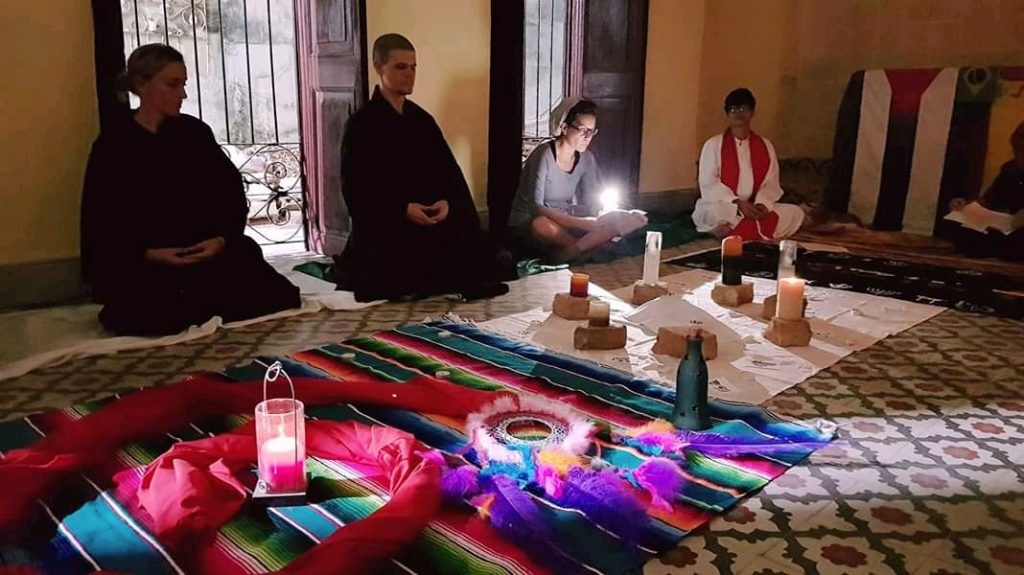
Knowing that one of the clergywomen of that church, Yileivys Cruz Suárez, belongs to the Matanzas Sangha, we got in touch with her to inquire about her impressions as a double practitioner. Kindly, she answered:
For me, the approach to Zen was an experience that changed my life forever. Through the practice, the silence and the meditation, I became gradually aware of the need to see the world with more sensitive eyes, and to feel compassion for the beings who suffer because of the boundless predation of humans. Being a Christian and, at the same time, assuming a Buddhist philosophy of life, has made me a limitless human, going to meet spirituality.
I have known in a closer way that connection which unites all of us beings with nature and I have learned to observe a world that runs excessively from a patient and non-turbulent perspective. Thus, I have made the commitment, every morning, to promote justice for those who suffer and are more vulnerable on Earth and for the full freedom of all beings as a sacrament of life.

As a general rule, both MCC and the followers of Zen in Matanzas, along with other people and groups, collaborate rescuing and assisting street animals. Also, the Sangha of Matanzas cooperates with the local Baptist church in environmental activities, such as collecting useless batteries to gather them in a reserved zone, thereby avoiding their indiscriminate proliferation.
“We hope that the creation of the Zen Center of Cuba in our city,” said Darlenys, “will also give us the possibility of expanding our work of fomenting a communal culture of respect for the environment.”
We conclude by wishing the Zen project in Matanzas, the “Athens of Cuba,” full success. This is a solemn promise of enlightenment for many people in the island, and equally a seedbed of ecumenism and interfaith fraternity. At the same time, it exemplifies a Cuban civil society interwoven, from its faith, with environmentalism and animal welfare.
Sadly, destructive global winds of fundamentalism and intolerance are blowing today, while the planetary catastrophe emanating from anthropocentric speciesism gets deepened. That’s why we need that Zen Center. And many more. Because nothing should definitely extinguish human compassion, nor our species’ perpetual aspiration for freedom. On the contrary, following the interviewed Zen clergywoman, we must be, “seeds in the wind flying freely to meet a mystery which we can neither name nor make our own.”
See more
Barbara Kosen (Asociación Zen Taisen Deshimaru)
Centro Zen en Cuba (Zenkan)
Mokusan Dojo Madrid
Related features from Buddhistdoor Global
Within Chaos, There Is a Refuge for Meditation
Integrating Dharma Practice in Spanish: An Interview with Venerable Dhammadīpa Samaneri Monk in Modernity: Bhante Sanathavihari
God of the Unknown: The Buddha in Chilean Magazines at the Turn of the 20th Century
Fo Guang Shan’s Never-ending Work in Chile
Expanding Buddhist Scholarship Through Pali Studies: An Interview with Aleix Ruiz Falqués
José Vasconcelos, the Forefather of Buddhism in Mexico
Interreligious Encounter Between Chan/Zen Buddhism and Carmelite Spirituality: Updates and Interviews with Participants



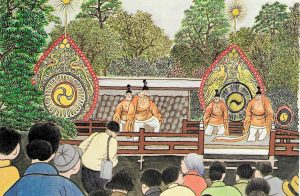

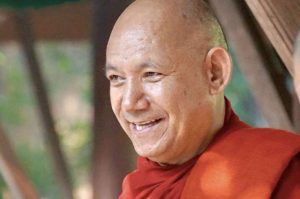




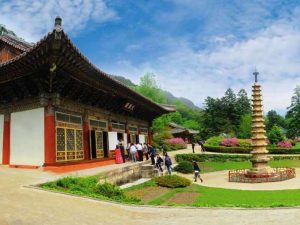

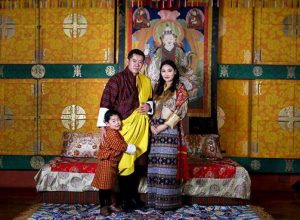
[…] Zen in the “Athens of Cuba”Interview with Montse Castellà Olivé, President of Sakyadhita SpainSpain Hosts Conference of the European Buddhist UnionWithin Chaos, There Is a Refuge for MeditationIntroducing the Buddhist Retreat Center Arya Tara, Madrid […]